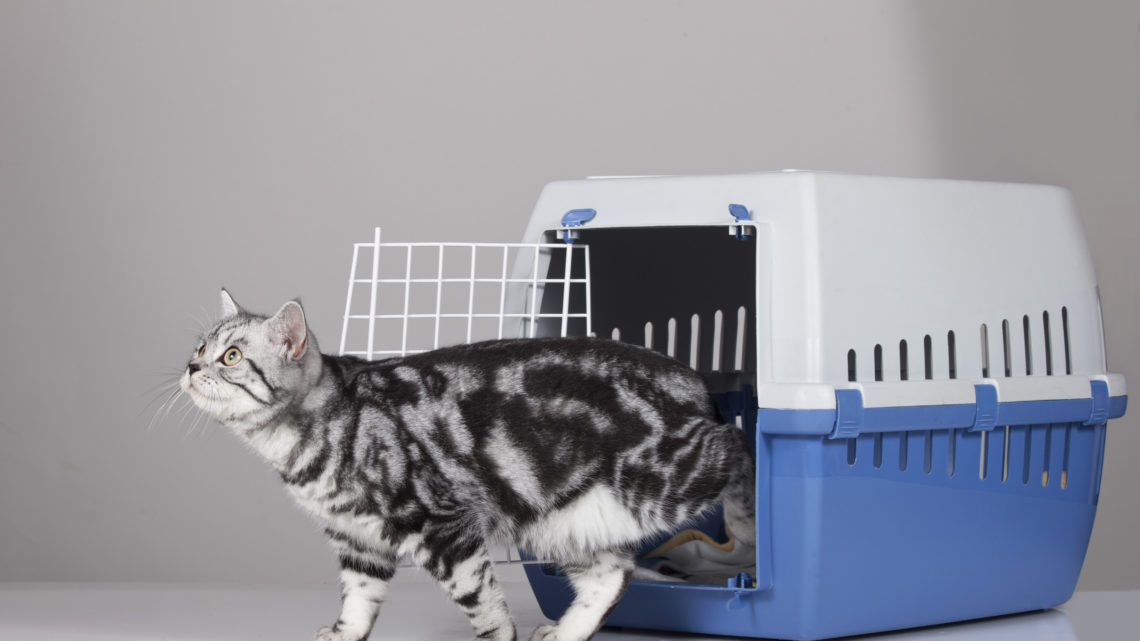Most felines run the other way when they see their cat carrier. Buying the right model for your kitty, and helping him acclimatize to it, will encourage him to feel a little more comfortable with this essential feline accessory.
If ever there was a relationship fraught with angst, it’s the one between cats and their carriers. A cat carrier is crucial for safely transporting your kitty to the veterinarian’s office, or anywhere else — but if he’s like most felines, he probably hates the sight of it. Taking the time to choose the right carrier for your cat, and helping him get accustomed to it, can remove some of the stress from this tumultuous relationship.
A basic carrier may not be the best choice
The classic hard shell box carrier with its small, front-loading wire door is what most people use. These types of carrier are often favored because they can be stood on end when attempting to get the cat inside. This isn’t the greatest tactic, however, since many cats will brace all four feet around the entrance, causing even more struggle and stress. Some models have been updated to include a top opening, but the cat may still resist being lifted inside if the door is too small.
The good news is that the wide variety of inspired designs on the market today can make the process of “cat meets carrier” much easier. Depending on the amount and type of traveling you do with your cat, these carriers range from serviceable to luxurious.
A selection of carriers to consider
- First up is the picnic basket-style carrier from Sheraton Luxuries. It opens wide at the top, closes securely, and can be strapped into a car using a safety belt. Because the top opening is so large, it’s super easy to place the kitty inside, even if he’s a bit recalcitrant.
- Armarkat carriers are made of vinyl and feature breathable mesh for added visibility, ideal for cats who are happier being able to see around them. Soft, removable fleece lounge pads are included and there are pockets for stashing treats and supplies. Some models have wheels for easy transport, and depending on the size, are airline compliant.
- The Sleepypod is great for long trips during which comfort is essential. The mesh dome-like top zips off, so the base can be used as a conventional bed at home – this can help your cat feel more at home with it when it’s time to turn it back into a carrier. The top itself zips across the middle for easy access. The interior has a comfy faux fur liner that can be zipped out for laundering. This crash-tested carrier straps securely into a vehicle. The Sleepypod also comes with a shoulder strap and handle. The company offers rectangular models for airline travel.
- SturdiPet carriers are often recommended for plane trips since they’re soft-sided, lightweight, and can be easily stashed under the seat. They’re made of a heavy canvas that’s easily wiped down. The mesh “windows” have roll-down covers for privacy (thereby accommodating cats that like to see out, as well as those that prefer to be enclosed). Access can be made from the top as well as the front. Some models have a divider to accommodate two cats.
This is just a small sampling of the many cat carrier choices available today. By taking the time to choose a high quality carrier that’s going to be comfortable for your kitty, you’ll help him feel a little better about riding in it.
Getting your kitty used to his carrier
- Prepare the cat carrier by spraying the interior with feline pheromones.
- Add a favorite blanket or other familiar piece of bedding.
- Place your cat in the carrier inside the house for short periods of time, and offer treats for good behavior.
- Put the kitty and carrier in the car – first, without the engine running, then with the engine started.
- Go down the driveway or a short way along the street.
- Repeat each step until the cat is comfortable.
- A few drops of Bach Rescue Remedy rubbed into the cat’s ears or paws can help calm him.






No Comment